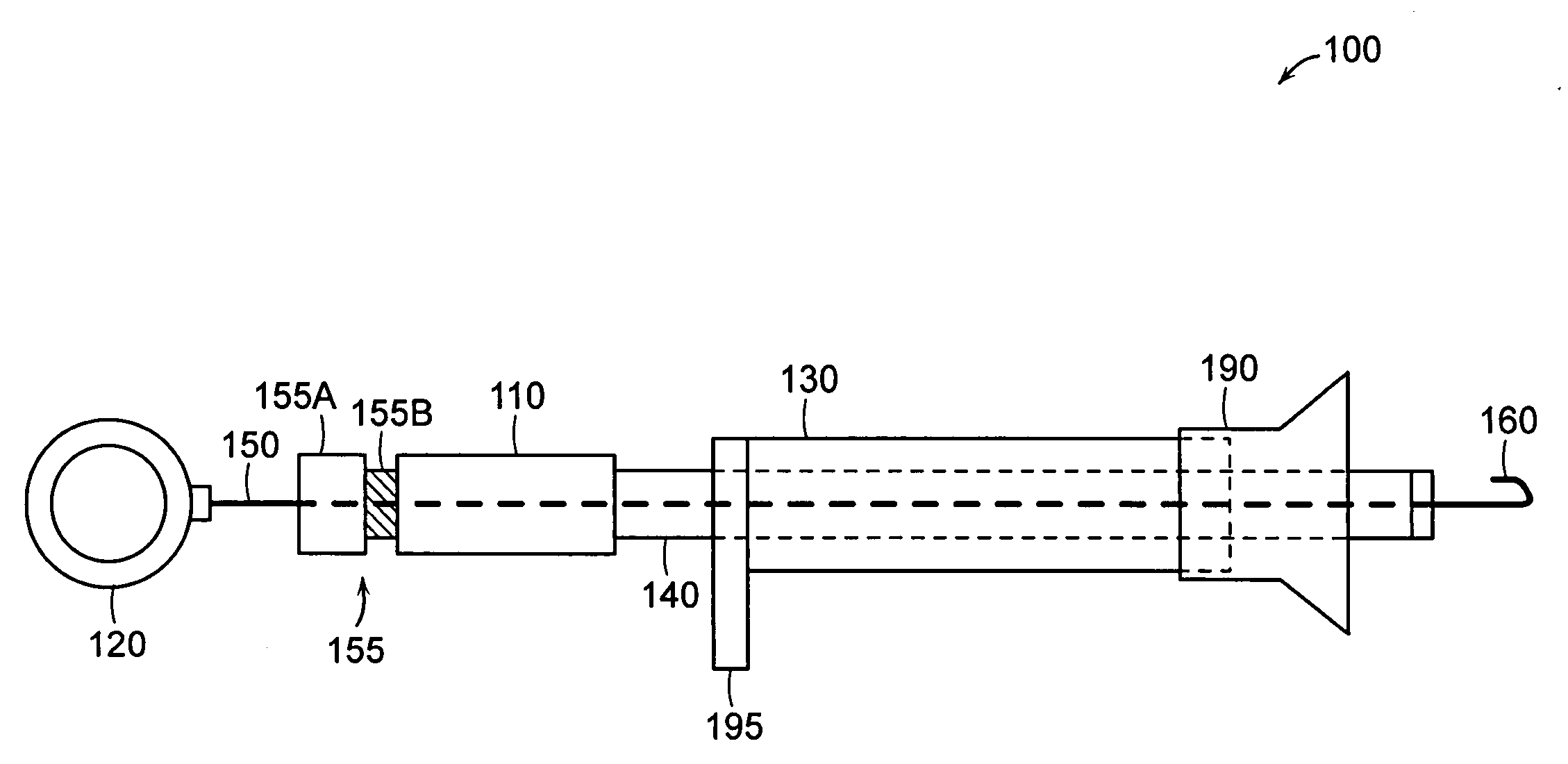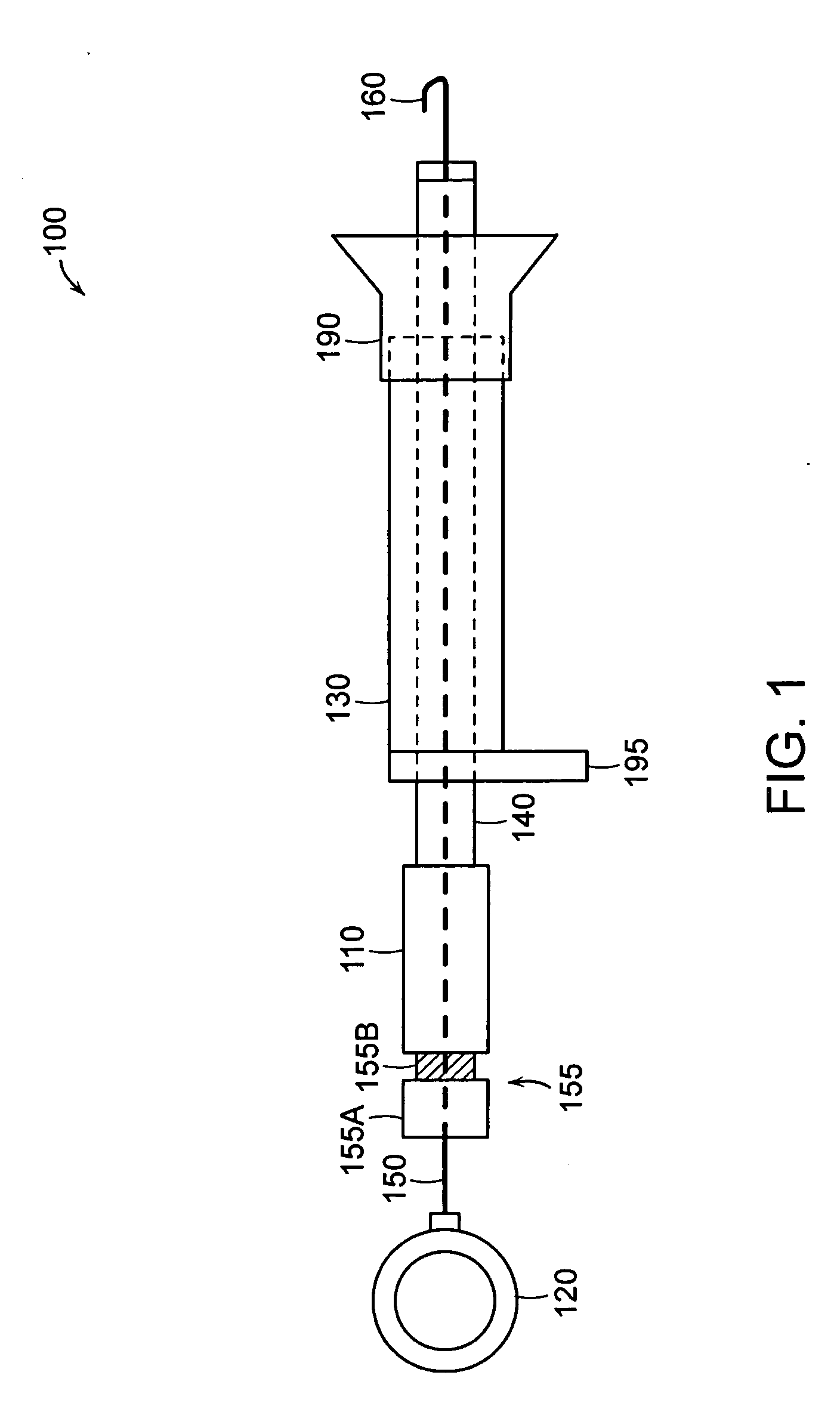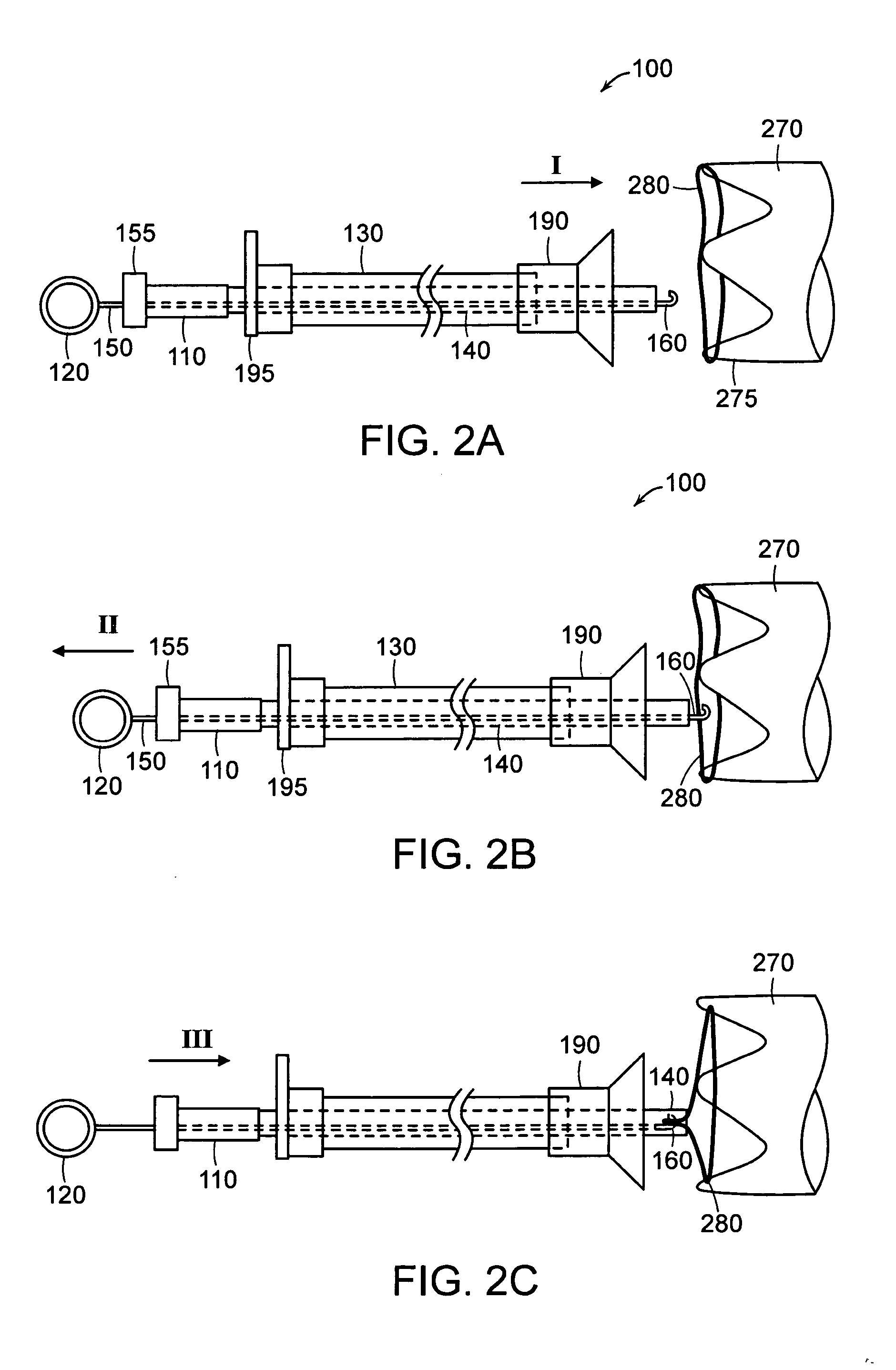Removal and repositioning device
- Summary
- Abstract
- Description
- Claims
- Application Information
AI Technical Summary
Benefits of technology
Problems solved by technology
Method used
Image
Examples
Embodiment Construction
[0021] A description of preferred embodiments of the invention follows.
[0022] Gastrointestinal implants can be used for a number of treatments, at least some of which are described in U.S. patent application Ser. No. 10 / 339,786, filed on Jan. 9, 2003 and incorporated herein by reference in its entirety. Implants placed within the gastrointestinal tract are typically subject to substantial mechanical forces related to the digestion process. For example, an implant placed within the intestine, distal to the pyloric sphincter, will be subjected to peristaltic forces tending to push and pull the implant along the intestine. To keep the implant in place, an anchoring device is required. Anchoring can include conventional surgical techniques, such as sutures, staples, surgical adhesives, etc. Anchoring within the intestine, however, poses a unique set of challenges. At least some anchoring devices use an interference fit, placing an implant device having a relaxed diameter larger than th...
PUM
 Login to View More
Login to View More Abstract
Description
Claims
Application Information
 Login to View More
Login to View More - R&D
- Intellectual Property
- Life Sciences
- Materials
- Tech Scout
- Unparalleled Data Quality
- Higher Quality Content
- 60% Fewer Hallucinations
Browse by: Latest US Patents, China's latest patents, Technical Efficacy Thesaurus, Application Domain, Technology Topic, Popular Technical Reports.
© 2025 PatSnap. All rights reserved.Legal|Privacy policy|Modern Slavery Act Transparency Statement|Sitemap|About US| Contact US: help@patsnap.com



